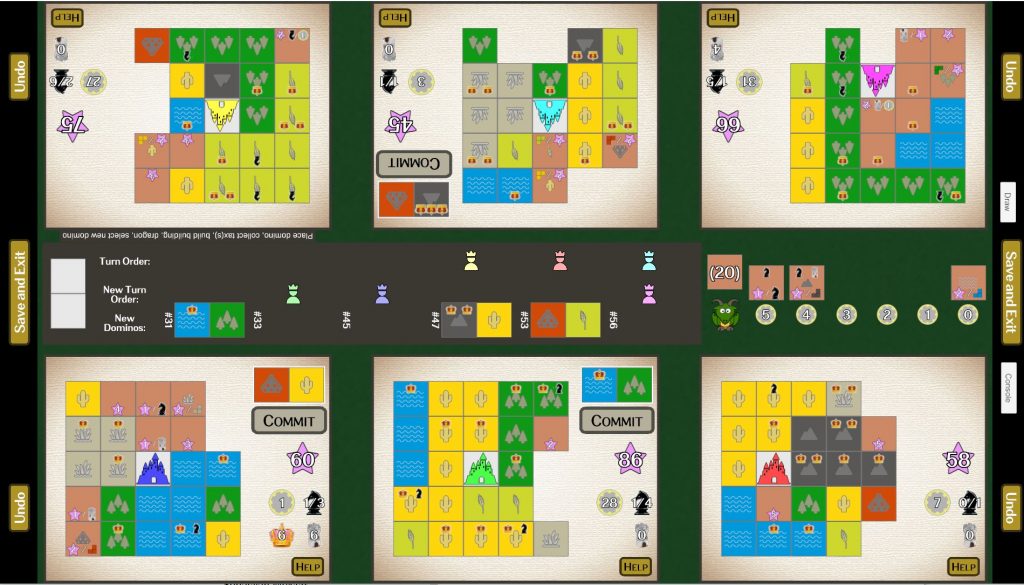I’ve completed a touch table conversion for King Domino and Queen Domino. King Domino is a relatively simple tile placement game with the interesting mechanic where the player who chose the “best” tile goes last in the next round. Queen Domino takes the kingdom building and tile placement mechanics from King Domino and adds city tiles that can have buildings added to them.

This was a fairly short project, taking a couple weeks to do both games. I was able to use some of the code for tile placement and growing boards from Between two Cities. My main goal with this conversion was to make this four player game support six.
King Domino comes with enough tiles for 2-4 players. Queen domino is also 2-4 players with its own set of tiles. The games can be combined into a 5-6 player Queen Domino, but in my opinion, combining the games this way makes for a very long game with under-powered city tiles. So instead, I created extra tiles sets for each game to support up to six players. A six player game of Queen Domino is still a little to long, but it is faster on the touch table so it is still fun.
Another advantage of the touch table version is the scoring. It takes a while at the end of the game to score the board – especially in Queen Domino. Not only does the computer do this for us, but it displays the running score during the game so that you can see who is winning and get a feel for how much each tile/action helps you.
The conversion ended up being harder than I’d expected. Part of that was my expectations were unrealistic, but I also spent quite a bit of time on board layout and animations.
Board layout took a while because I was trying to maximize the size of the tiles. It didn’t really matter for King Domino, but in Queen domino there can be quite a bit of information displayed on a tile, so it needed to be as big as possible.
I tried out a new animation system for this game. I had a separate thread that handled all animation. The main thread would add animation routines/calls to the animation thread as things happened. This had the advantage of allowing me to created animations as the model was changed instead of isolating animation code in its own function. However, the actual animations still ran after all model updates, so the animation code didn’t have access to the old state of the model. This only became a problem when the model was updated multiple times before the animation got to run.
Overall I liked the new animation system well enough to continue to use it for my next game. This game had fairly simple animations, so I want to test the new system with a bigger game.